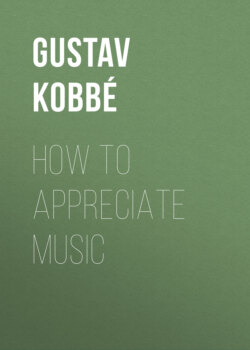Читать книгу How to Appreciate Music - Gustav Kobbé - Страница 23
На сайте Литреса книга снята с продажи.
The Mission of the Player.
ОглавлениеWe often hear it said of the greatest contemporary pianist that he is a great Chopin player, but not a great Bach player. He could not be, and at the same time be the greatest living virtuoso. It is the worshiper of tradition, the reserved, continent, scholarly player, the player who converts a Chopin nocturne into an icicle and a Schubert impromptu into a snowball, who revels in counterpoint—the player who always is slavishly subordinating himself to what he is pleased to call the “composer’s intentions” and forgets that the truly great virtuoso creates when he interprets. Some times the virtuoso may go too far and depart too much 60 from the character of the piece he is playing, subjecting it more than is permissible to his temporary mood; but it is better for art to err on the side of originality, provided it is not bizarre or freakish, than on the side of subserviency to tradition.
While I have no desire, in writing as above, to exalt unduly the virtuoso, the interpreter of music, at the expense of the composer, I must insist that the great player also is creative, in the sense that every time he plays a work he creates it over again from his own point of view, and thus has at least a share in its parentage. Indeed, it seems more difficult to attain exalted rank as a virtuoso than to gain immortality as a composer. The world has produced two epoch-making virtuosos—Paganini on the violin, Liszt on the piano. Within about the same period covered by the careers of these two there have been half a dozen or even more composers, each of whom marks an epoch in some phase of the art. “The interpretive artist,” says Henry G. Hanchett in his “Art of the Musician,” “deserves a place no whit beneath that of the composer. No two composers have influenced musical progress in America more strongly than have Anton Rubinstein by his playing, and Theodore Thomas, who was not a composer.”
